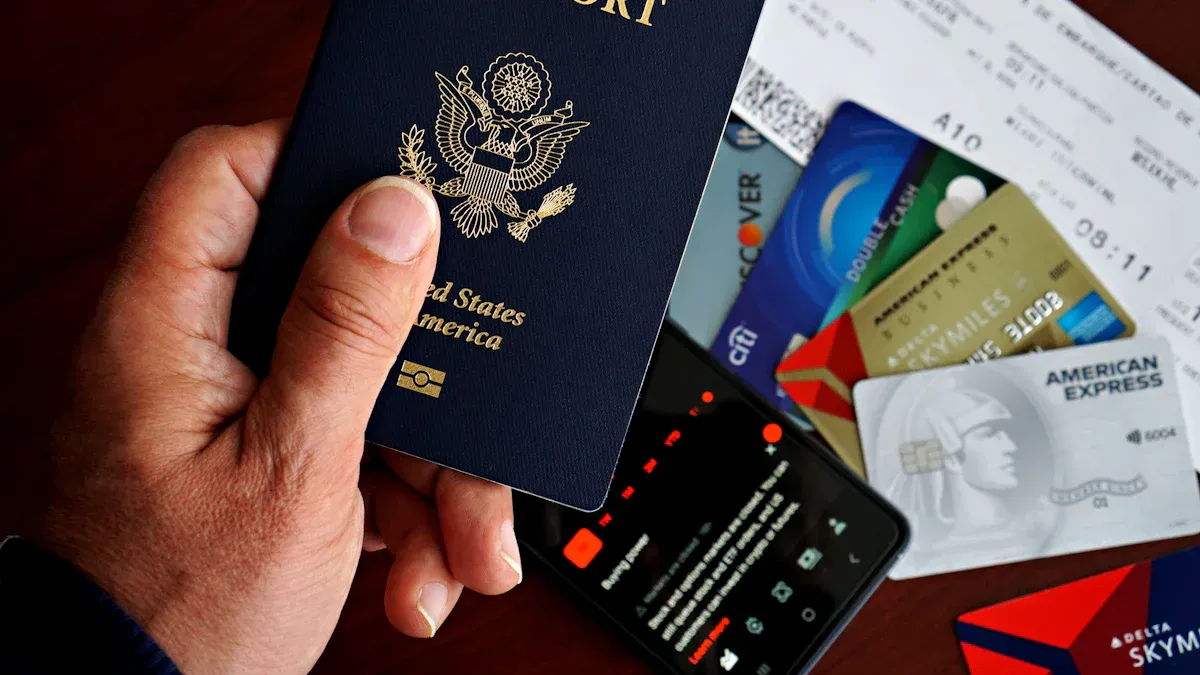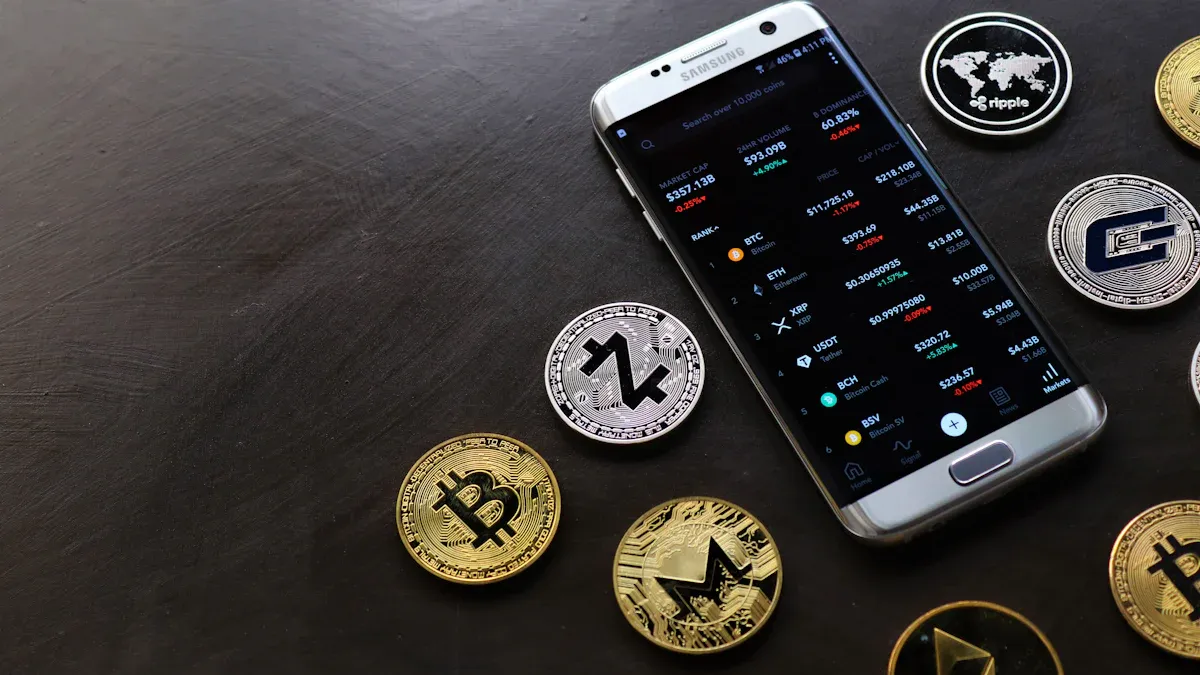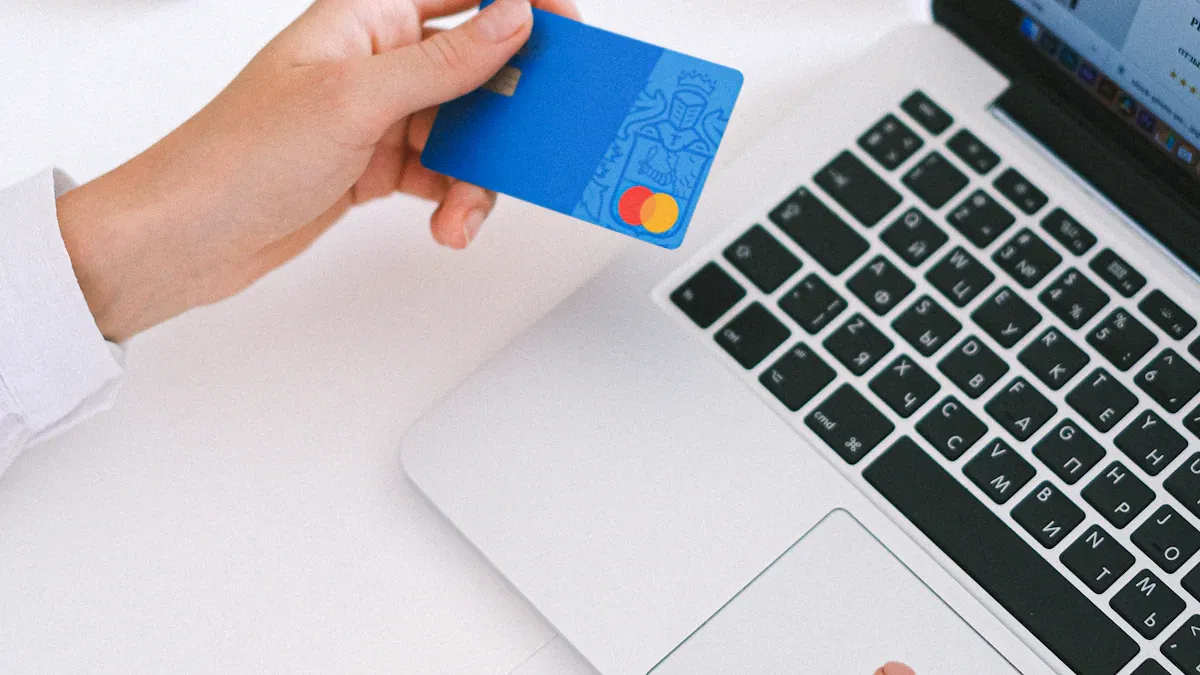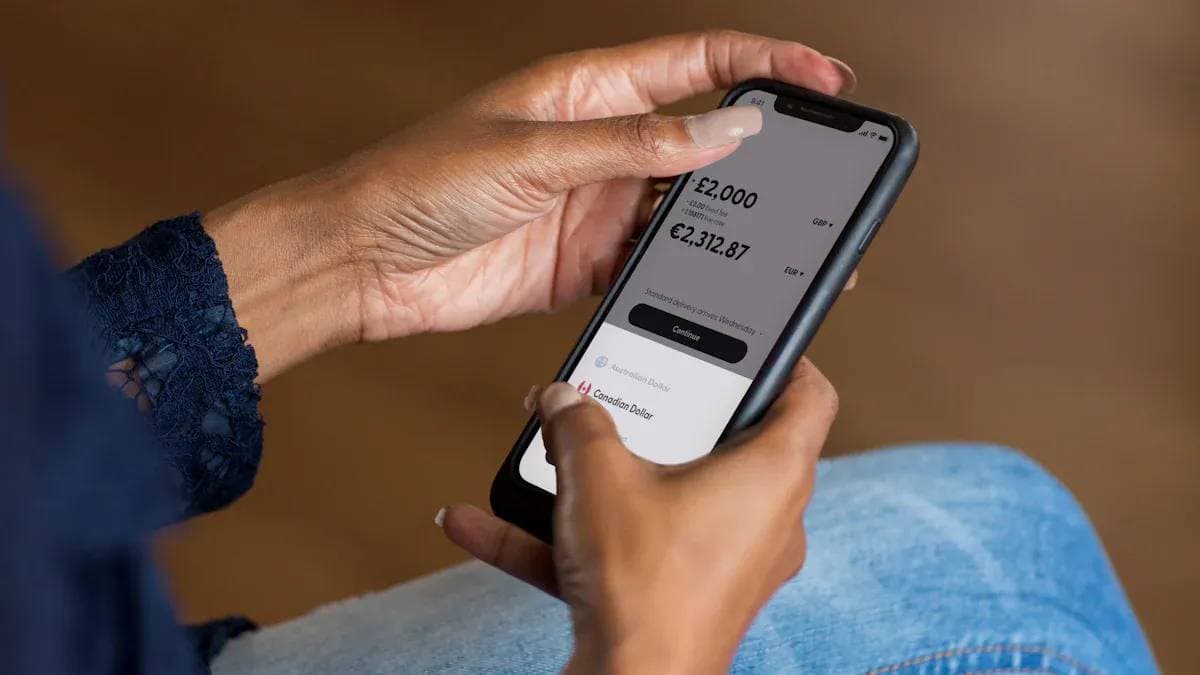- EasyCard
- Trade
- Help
- Announcement
- Academy
- SWIFT Code
- Iban Number
- Referral
- Customer Service
- Blog
- Creator
2025 Cross-Border Payment Trends: Comprehensive Analysis of Digital Currency Solutions

Image Source: pexels
Imagine a traditional international remittance: funds in transit for days, not only with $15 to $30 in fixed fees but also hidden high currency conversion markups from intermediary banks. This lengthy and expensive experience is the long-standing pain point of cross-border payments.
Entering 2025, stablecoin-centric digital currency solutions are completely changing this status quo. It is no longer a distant concept but a practical tool providing efficient, low-cost payments for businesses and individuals. This article will deeply analyze how digital currencies disrupt traditional payments, how much cost they can save, and how to safely and compliantly utilize this trend.
Key Points
- Digital currencies make cross-border payments faster and cheaper, changing traditional payment methods.
- Stablecoin payments save money and time, being over 90% cheaper than traditional bank remittances with much faster speeds.
- Digital currencies allow people without bank accounts to send and receive payments, helping more people access financial services.
- Blockchain technology makes digital currency transactions more secure and transparent, preventing information tampering.
- When using digital currency payments, choose compliant platforms and carefully verify recipient addresses to ensure fund safety.
Digital Currency Cross-Border Payments: Operational Principles Analysis

Image Source: pexels
To understand the disruptiveness of digital currency solutions, first examine the bottlenecks of traditional models.
Bottlenecks of Traditional Remittances
Traditional cross-border remittances rely on a complex correspondent bank network. Funds from the sending bank to the receiving bank often require relay through multiple intermediary banks. This process is not only slow but also costly and opaque. Besides fixed fees charged by banks, each intermediary bank deducts a service fee, and sometimes the recipient faces a “lifting fee”. For a $200 transfer, total fees can reach 4% to 18%. More importantly, delayed settlement of funds in transit ties up significant liquidity, causing invisible financial losses.
Stablecoin Payment Process Breakdown
Stablecoin payments bypass the complex intermediary links above, with an extremely simplified process. The entire process occurs on the blockchain, typically following these steps:
- Initiate Transaction: The payer selects a stablecoin like USDC or USDT in a digital wallet, enters the recipient’s wallet address and amount.
- Broadcast and Validation: The payer confirms and “signs” the transaction. The instruction is broadcast to the blockchain network and validated by global computer nodes.
- Transaction On-Chain: Once validated, the transaction is permanently recorded on the blockchain. This process usually takes seconds to minutes.
- Funds Arrival: Funds arrive almost simultaneously in the recipient’s wallet, ready for immediate use or conversion to local fiat.
Important Tip: Blockchain transactions are irreversible. Before sending, triple-check the recipient address accuracy via copy-paste or QR code scanning.
Mainstream Technical Paths: TRON and Stellar Networks
The key to low cost and high speed lies in the underlying blockchain networks. Currently, TRON and Stellar are two mainstream choices, far outperforming traditional banking systems in efficiency. Many fintech companies, such as MoneyGram, have begun leveraging these networks to optimize payment services.
| Network | Transaction Fee (USD) | Final Confirmation Time |
|---|---|---|
| TRON | Usually under $1, free with staking | About 1 minute |
| Stellar | About $0.00001 | 3-5 seconds |
Core Differences from SWIFT Model
Digital currency payments fundamentally differ from the traditional SWIFT system. SWIFT itself is a messaging system that only sends payment instructions, with actual fund settlement relying on pre-funded Nostro/Vostro accounts between banks. Stablecoin payments combine instructions and settlement. It directly transfers value on the blockchain with real-time arrival, eliminating reliance on intermediary accounts and batch settlements, greatly enhancing capital efficiency.
Digital Currency Solutions: Four Core Advantages
Compared to the many bottlenecks of traditional models, digital currency solutions demonstrate four disruptive advantages in cost, speed, accessibility, and security. These advantages collectively form the core driving force reshaping the global payment landscape.
Disruptive Cost Savings
Cost is the most intuitive consideration for businesses and individuals when choosing cross-border payment services. Digital currency solutions offer unparalleled advantages in this area, with cost savings up to over 90%.
Traditional bank wire transfers not only charge fixed handling fees but also include 2%-4% hidden exchange rate markups. Stablecoin payments bypass all intermediary links with an extremely transparent fee structure.
| Payment Method | Fee Range (USD) | Additional Fees |
|---|---|---|
| Bank Wire Transfer (International) | $40 - $50 | 2-4% exchange rate markup |
| Stablecoin (TRON/Stellar) | Usually under $1 | No intermediary bank fees or currency conversion fees |
For a $50,000 international payment, traditional wire transfer total costs may range from $1,090 to $2,125. In contrast, completing the same amount via stablecoin may cost as low as $0.01, up to $50. This means cost reduction up to an astonishing 98%. Such huge cost differences allow businesses to reinvest saved funds into core growth.
Near-Instant Transaction Speed
Time is money, especially in global trade. Settlement delays in traditional payment systems often leave funds in transit for days, severely impacting enterprise cash flow.
A McKinsey report notes that due to multiple intermediaries, different time zones, and batch processing cycles, traditional global payment networks can take up to five business days for a transaction. For example, a European company paying an Asian supplier may be forced to wait 2-3 days due to bank closures or weekends.
Digital currency payments shorten this long wait to minutes or even seconds. Transactions complete near-real-time on the blockchain, unaffected by bank hours or holidays.
| Payment Method | Settlement Time |
|---|---|
| Stablecoin Payment | Minutes (sometimes seconds) |
| ACH Transfer | 1-3 business days |
| International Wire Transfer | 1-5 business days or longer |
This speed advantage brings tangible business value. Importers can pay overseas suppliers the same day an invoice is received, and logistics companies can release goods without waiting for bank confirmations. This not only accelerates supply chain efficiency but, more importantly, releases previously tied-up funds, greatly improving enterprise cash flow management.
Borderless Financial Accessibility
Over 1.4 billion adults globally remain unbanked, excluded from mainstream financial services. Digital currency solutions are breaking this barrier, opening new paths for financial inclusion.
Recipients no longer need traditional bank accounts; they only require an internet-connected smartphone and a digital wallet to receive payments from anywhere in the world.
- Empowering Freelancers: In some developing economies, freelancers receiving USD-pegged stablecoins can effectively hedge local currency inflation risks, preserving the value of their labor income.
- Lowering Remittance Barriers: For overseas workers remitting to family, stablecoin payment fees are far lower than traditional channels, meaning more money reaches family hands.
- Connecting the Digital Economy: In regions like sub-Saharan Africa, stablecoins have become vital tools for local workers participating in the global gig economy, seamlessly receiving international compensation.
Core Change: Access to financial services no longer depends on physical branches or complex account opening but simplifies to a smartphone and internet connection.
Blockchain-Based Transparency and Security
Many doubt digital currency security, but its underlying blockchain technology provides unprecedented safeguards. This stems from two core features: decentralization and cryptography.
- Decentralization: Unlike banks storing data on centralized servers, blockchain distributes transaction records across thousands of global computers. To tamper with a transaction, an attacker must control the majority of the network’s computers, which is practically impossible.
- Cryptography: Each transaction is signed and verified via complex encryption algorithms, forming a unique, unfalsifiable “digital fingerprint.” Any minor change invalidates the signature, and the transaction is rejected by the network.
This technical architecture ensures transaction records have the following key characteristics, building a highly trustworthy payment environment:
- Immutability: Once recorded, transactions cannot be altered or deleted.
- Transparency: All transactions are recorded on a public ledger, auditable anytime by authorized parties, with personal privacy protected.
- Traceability: Every fund flow path is clearly traceable, greatly simplifying audit and compliance processes.
Thus, blockchain-based digital currency solutions are not more dangerous but surpass existing traditional payment systems in anti-fraud, anti-tampering, and transaction transparency.
Opportunities and Challenges: The Road Ahead Is Not Smooth
Despite the huge opportunities digital currency solutions bring, their development path is not smooth. Businesses and individuals embracing this trend must clearly recognize hidden challenges, mainly in regulation, security, market, and competition.
Uncertainty in Global Regulatory Frameworks
Major economies worldwide have varying attitudes toward stablecoins, forming a complex and evolving regulatory environment. This uncertainty is currently one of the biggest challenges.
- United States: Takes a proactive supportive stance. Officially views USD stablecoins as an extension of financial strength and regulates via legislation.
- European Union: Cautious and sovereignty-first. Its MiCA regulation encourages innovation while setting strict protections to limit reliance on non-euro stablecoins and actively advances the digital euro project.
- Mainland China: Tends toward strict restrictions. Regulators mainly worry stablecoins may be used to evade capital controls or engage in illegal activities, thus tightening applications.
Technical Security and User Operational Risks
Blockchain technology itself is secure, but risks often arise at the platform and user levels. Attackers frequently use social engineering (like phishing) to steal assets, indicating human factors are the key weak point in security. Meanwhile, user errors can lead to permanent fund loss.
Security Operation Tips: To protect your digital assets, be sure to:
- Use strong passwords and enable two-factor authentication (2FA).
- Never conduct transactions on public Wi-Fi.
- Double-check recipient addresses, as blockchain transfers are irrevocable.
- Beware any “official” messages asking for private keys or passwords.
Market Volatility and Liquidity Issues
Although stablecoins are pegged to fiat like USD, their stability is not absolute. Research shows stablecoin value fluctuations are mainly influenced by cryptocurrency market (especially Bitcoin) volatility, not traditional financial markets. When major crypto assets like Bitcoin experience sharp swings, it may impact stablecoin liquidity and trust, posing potential risks.
Entry and Competition from Traditional Giants
The disruptive advantages of digital currency payments have alerted and prompted action from traditional payment giants. They are not sitting idle but actively entering the space.
For example, Western Union is exploring integrating stablecoin technology to reduce costs in its global remittance business. Meanwhile, Visa and Mastercard have connected their networks to stablecoin settlements via crypto partnerships. The entry of these giants validates digital currency payment feasibility on one hand and intensifies market competition on the other.
Practical Guide: Starting Your Digital Currency Payments

Image Source: pexels
Theoretical knowledge is the foundation, but actual operation truly unleashes digital currency potential. This section provides a clear guide to help individuals and businesses safely and efficiently start their digital currency payment journey.
Choosing Compliant Platforms and Digital Wallets
The first step into the digital currency world is selecting a safe, compliant platform. This concerns not only fund safety but also subsequent transaction smoothness. A reliable platform should meet these core standards:
- Regulation and Licensing: Check if the platform is licensed in major jurisdictions (e.g., U.S., EU, Singapore, Hong Kong) and strictly complies with anti-money laundering (AML) and know-your-customer (KYC) rules.
- Asset Security: The platform should store the vast majority of user funds (usually over 90%) in offline cold wallets and use multi-signature technology for withdrawals. It should also provide proof of reserves, ensuring 1:1 full backing of user assets.
- Technical Robustness: Strong technology is the security foundation. This includes hardware-level protection for private keys and API keys and independent third-party audits of smart contracts (e.g., CertiK, Hacken).
- User Control: The platform should offer robust user security tools, such as two-factor authentication (2FA), withdrawal address whitelists, and device management features.
Take Biyapay as an example: As a regulated financial institution, Biyapay holds MSB licenses in the U.S. and Canada, strictly enforcing KYC/AML processes. It uses cold-hot wallet separation and multi-signature technology to secure assets, providing users a compliant and reliable operating environment.
Besides one-stop platforms like Biyapay, the market has other providers focused on specific areas:
| Platform | Core Business | Target Users |
|---|---|---|
| Checkout.com | Processes payments for large enterprises, supports cryptocurrency transactions | Enterprises needing large-scale payment processing |
| MoonPay | Focuses on seamless fiat-to-crypto conversion | Consumer-facing platforms and NFT markets |
| Stitch | Provides multiple payment solutions, including crypto payments | Businesses operating in Africa seeking multi-functional payments |
How to Acquire and Manage Stablecoins
After choosing a platform, the next step is acquiring and managing stablecoins for payments (e.g., USDC or USDT).
General Process for Acquiring Stablecoins:
- Register and Verify Account: Create an account on the chosen platform (e.g., Biyapay) and complete identity verification (KYC) as required.
- Deposit Fiat: Deposit USD or other fiat via bank transfer, credit/debit card, etc., into the platform’s fiat wallet. For example, users can remit from a Hong Kong licensed bank account to the platform’s designated account.
- Purchase Stablecoins: In the platform’s trading or conversion interface, select to buy USDC or USDT with deposited fiat.
- Confirm Transaction: Enter the desired purchase amount, check the exchange rate and fees, then confirm. Stablecoins will soon appear in your digital wallet.
Best Practices for Securely Managing Stablecoins:
Secure management is paramount in digital asset operations. Bad habits can lead to permanent asset loss.
Core Security Principles
- Use Cold-Hot Wallet Separation: Store most infrequently used assets (about 95%) in offline hardware wallets (cold wallets). Keep only a small amount for daily transactions (about 5%) in connected hot wallets.
- Enable Two-Factor Authentication (2FA): Enable 2FA for your account, preferring authenticator app methods (e.g., Google Authenticator) over SMS.
- Set Withdrawal Whitelists: Enable this in platform settings to restrict withdrawals to pre-approved, trusted wallet addresses.
- Never Share Private Keys: Your private key or seed phrase is ultimate asset control. Never share it in any form with anyone.
Step-by-Step Cross-Border Payment Demonstration
After preparations, initiating a cross-border payment is very simple. Here’s an example using Biyapay to pay a USDC invoice to an overseas supplier:
- Obtain Recipient Address: Request the supplier’s USDC-receiving wallet address and corresponding blockchain network (e.g., TRON/TRC-20). This is the most critical step.
- Log In and Select Transfer: Log into your Biyapay account, go to the assets or wallet page, select USDC, then click “Send” or “Withdraw.”
- Fill Transfer Information:
- Paste Recipient Address: Fully copy and paste the address obtained in step 1 into the recipient field.
- Select Network: Choose the network matching the recipient’s address, e.g., TRON (TRC-20). Wrong network selection causes permanent asset loss.
- Enter Amount: Input the USDC amount you wish to pay.
- Review and Confirm: Before sending, carefully double-check the recipient address, network, and amount one last time. The platform displays estimated transaction fees (usually under $1).
- Complete Security Verification: Enter your transaction password and 2FA code to confirm sending.
- Transaction Complete: Within minutes, the transaction confirms on the blockchain, and your supplier receives the USDC in their wallet. The entire process requires no bank clearing wait.
Enterprise-Level Application Scenarios
For enterprises, digital currency solutions go far beyond single payments, reshaping multiple aspects of financial management.
- Global Supplier Payments: The most direct application. Import-export companies can pay suppliers worldwide using stablecoins, avoiding high wire fees and exchange losses while accelerating goods flow.
- Corporate Treasury Management: Multinational companies can use stablecoins for internal fund pooling and allocation. For example, Standard Chartered Bank is exploring stablecoins to enhance treasury efficiency, achieving 7x24 global fund mobility.
- International Payroll: Paying overseas employees or freelancers is another powerful scenario.
- Advantages: Near-instant payments, extremely low costs (usually 0.1%-0.5%), and helps unbanked employees integrate into the global digital economy. Stablecoin use also protects employee income from local currency fluctuations.
- Practice: Companies like Scale AI allow overseas contractors to choose stablecoin compensation. Enterprises can use platforms like Biyapay for batch payroll with employee consent and local compliance, greatly simplifying cross-border payroll complexity.
- Digital Content and Ad Revenue Settlement: Media and content platforms can pay royalties or ad shares to global creators and publishers using stablecoins, bypassing lengthy bank processing cycles.
These scenarios show how digital currency payments evolve from a simple tool into a strategic asset optimizing enterprise cash flow, enhancing operational efficiency, and boosting global competitiveness.
Digital currencies bring disruptive advantages to 2025 cross-border payments. Their breakthroughs in cost and efficiency signal an irreversible development momentum.
Looking ahead, central bank digital currencies (CBDCs) will accelerate this process. China’s digital yuan (e-CNY) pilot transaction volume has neared 986 billion USD, and the European Central Bank is advancing the digital euro. These projects will drive digital payments deeper into mainstream finance.
For businesses and individuals, now is the best time to stay open-minded, start small-scale learning, and experimentation. Proactively embracing change positions you to seize opportunities in the coming payment era.
FAQ
Are digital currency cross-border payments legal?
The compliance of digital currency payments varies by country/region. Regions like the U.S. and EU have incorporated them into regulatory frameworks. Users must understand and comply with local laws before use. Choosing licensed compliant platforms is key to ensuring transaction legality.
Are stablecoin prices truly stable?
Mainstream stablecoins (like USDC) maintain 1:1 USD pegs via full USD reserves. Though minor deviations may occur in extreme market volatility, their design goal is price stability, distinguishing them from high-volatility crypto assets like Bitcoin.
What if the recipient address is entered incorrectly?
Blockchain transactions are irreversible. Once confirmed, funds cannot be recovered.
Therefore, before initiating payment, users must repeatedly verify recipient address accuracy via copy-paste or similar methods. This is one of the most important habits for fund safety.
Are stablecoins suitable for small payments?
Very suitable. For small, high-frequency payment scenarios (like paying royalties), stablecoin advantages are more pronounced. Transaction fees are usually under $1, far below traditional wire minimum charges. This offers highly cost-effective payment options for freelancers and small businesses.
*This article is provided for general information purposes and does not constitute legal, tax or other professional advice from BiyaPay or its subsidiaries and its affiliates, and it is not intended as a substitute for obtaining advice from a financial advisor or any other professional.
We make no representations, warranties or warranties, express or implied, as to the accuracy, completeness or timeliness of the contents of this publication.




Contact Us
Company and Team
BiyaPay Products
Customer Services
is a broker-dealer registered with the U.S. Securities and Exchange Commission (SEC) (No.: 802-127417), member of the Financial Industry Regulatory Authority (FINRA) (CRD: 325027), member of the Securities Investor Protection Corporation (SIPC), and regulated by FINRA and SEC.
registered with the US Financial Crimes Enforcement Network (FinCEN), as a Money Services Business (MSB), registration number: 31000218637349, and regulated by FinCEN.
registered as Financial Service Provider (FSP number: FSP1007221) in New Zealand, and is a member of the Financial Dispute Resolution Scheme, a New Zealand independent dispute resolution service provider.



















